

"When I started medical school, I was planning on going into ophthalmology or neurology. Pathology wasn’t on my radar at all, I didn’t even know what it was. Then, during my second year, my school offered a pathology elective, and I thought, “Why not?”
Tell us about your background so we can get to know you a little bit.
I’m originally from Ann Arbor. I went to Saline High School, then came to the University of Michigan where I studied Neuroscience for my undergraduate degree. I spent some time in Illinois where I went to medical school at Rosalind Franklin, which was a nice way to step out of the state for a little bit and see other places. But ultimately, I returned because I have always loved Ann Arbor; and it has been so amazing to be back.
 What motivated you to pursue a medical career?
What motivated you to pursue a medical career?
Oddly enough, I kind of just stumbled into it. During undergrad, I knew I was generally interested in science and possibly a health-related field. I considered going into academia because I loved chemistry and teaching and thought that perhaps I could be a chemistry professor. I also considered other avenues including genetic counseling or speech or occupational therapy but none of those other professions really clicked with me. I initially avoided medicine because people always said not to go into medicine unless you absolutely loved it. But after a few years of career exploration, medicine seemed like it fit with my overall academic interests and career goals better than anything else I had found. When I started this path, I was a little unsure if I had made the right decision, but I am so glad I did. Every year I am more and more grateful that I chose to pursue medicine.
How did you decide on Pathology?
When I started medical school, I was planning on going into ophthalmology or neurology. Pathology wasn’t on my radar at all, I didn’t even know what it was. Then, during my second year, my school offered a pathology elective, and I thought, “Why not?” The elective had me shadowing a few community pathologists in anatomic and clinical subspecialties. That was my first exposure to pathology, and I enjoyed it more than I expected to, enough that I began to consider whether pathology might be the right option for me.
However, I didn’t decide until my 4th year after I had seen most other specialties. In fact, when scheduling my 4th year rotations, I just trusted my gut instinct that pathology was what I loved most in medicine. My first legitimate pathology rotation wasn’t until the start of my 4th year. I went into it really hoping I would like it, because if I didn’t, I didn’t know what I was going to do. Thankfully, that experience was exactly what I had hoped for, and it reassured me that I had made the right decision.
 You ranked Michigan highly for the Match. What attracted you to our program?
You ranked Michigan highly for the Match. What attracted you to our program?
Two factors were most important to me: location and program. My family lives in Ann Arbor, so nothing could beat Michigan in terms of location. But what truly sold me was the program. I did an away rotation at Michigan, and it was such a fantastic experience. Everyone was so open and inviting and excited to teach and help me grow. As a learner, I have had rotations where you feel like you are just there to be there. I never felt that here at Michigan. Even as a med student, the residents and attendings always found time to make sure I was learning and that I was getting something out of this opportunity. That sort of welcoming, encouraging, education-focused environment was what I wanted for my training.
Michigan is also on the forefront of technology in pathology. It is one of the few programs that has incorporated digital pathology this early. I don’t know what the future will look like, but I am sure that digital pathology will be in it in some way, shape, or form and I want to be prepared for it when I start practicing as a pathologist.
Tell us about your time as a resident so far. Is there anything you would like to highlight?
I am on the Anatomic Pathology (AP)/Clinical Pathology (CP) track, so I will be training in both sides of pathology. I’ve had a little bit of experience with both so far, and it’s been interesting to see the range of expertise that is covered by pathologists.
Over the last 1.5 months, I feel like I finally understand what people mean when they say they enjoy going to work. I am excited to come in every morning. I don’t mind staying late. Even when I go home, I want to read about interesting cases I encountered that day. It is such an awesome feeling to have, to go through the entire day and not feel so drained. Obviously, some days are harder, but all in all, it has just been such a rewarding experience.
What brings you the most joy in your work and personally?
In terms of work, it’s a bit cliché, but I really enjoy the problem-solving aspect. It is so fun to be given a new case and go through the process of working it up to arrive at a diagnosis. There are times when you get the correct diagnosis immediately and other times when your work-up doesn’t pan out. But regardless, I’ve found that the process is what I enjoy the most.
On the personal front, I’ve always enjoyed reading and playing video games but recently, I’ve been trying to branch out and explore other hobbies. I just signed up for a 6-week long pottery class this fall that I am really looking forward to.
Were there any mentors you would like to mention? If so, how did they impact your life?
The mentor who made the biggest impact on me was my violin teacher from middle school and high school. The violin can be a finnicky instrument and many times, I felt like quitting and not practicing anymore. My violin teacher taught me to have patience and diligence when facing a difficult challenge. It is because of her that I was able to push through and learn to play pieces I never dreamed I could. This mentality has stuck with me. Consistent effort is what has gotten me to where I am today.
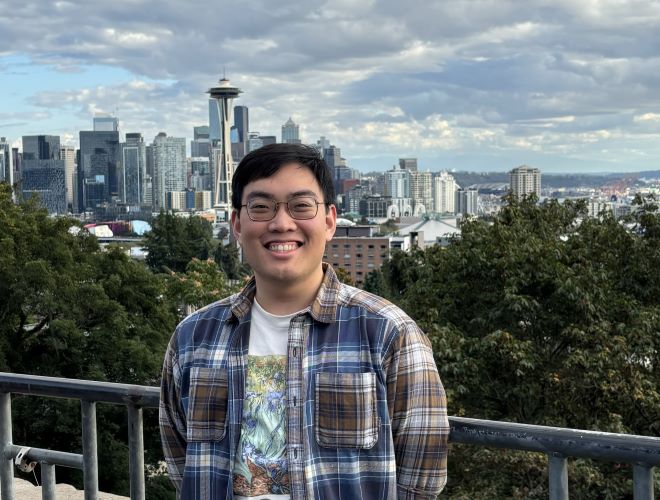 What is your strategy for finding balance between training and your other interests?
What is your strategy for finding balance between training and your other interests?
That’s something that I am still working on, but I have realized that sometimes it’s important to recognize that I don’t know what I don’t know. I can study or look things up and spend hours on a case, but some problems are too difficult to solve without proper guidance and mentorship. I’ve learned to recognize those situations and tell myself that I’ll spend X amount of time working on the case. If I’m still lost after that, I’ll set it aside and come back to it when I have more tools and resources. Otherwise, I would never get to anything else.
In a similar vein, I’ve learned to set boundaries between my work and personal life. Even on the busiest days, I make sure to set aside some time for myself to relax and enjoy my hobbies or spend time with family and friends.
What advice would you give medical students considering a career in pathology?
Shadow a pathologist. Do a rotation. Whatever you can do to see what pathology is like in the clinical setting. Unfortunately, the way pathology is taught in medical schools bears little resemblance to what pathology is like in practice. Because of that, I think a lot of students don’t realize the extent of what pathology is. I didn’t until I started my own rotations. If any student is even remotely interested, my biggest advice is to get exposure to the field in person.
What are some fun facts about you that we could share?
I mentioned I played violin. In addition to classical violin, I was also part of a local fiddling group that performed across the state of Michigan nearly every weekend. Once a year, we also had mini “tour” during the summer. My freshman year of high school, we did a 2-week tour where we performed throughout Scotland, England, and Wales.
Welcome to Pathology, Dowon! We are happy to welcome one of our own back to Michigan! Go Blue!
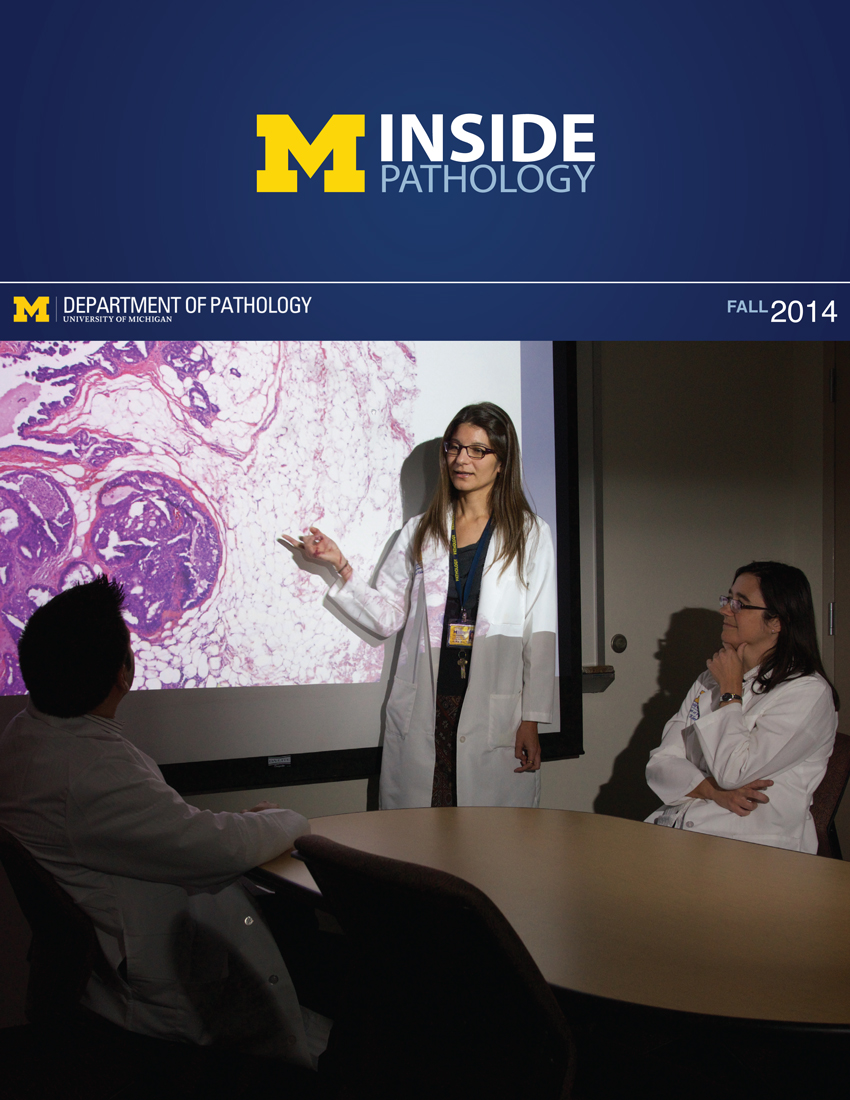 ON THE COVER
ON THE COVER
Breast team reviewing a patient's slide. (From left to right) Ghassan Allo, Fellow; Laura Walters, Clinical Lecturer; Celina Kleer, Professor. See Article 2014Department Chair |

newsletter
INSIDE PATHOLOGYAbout Our NewsletterInside Pathology is an newsletter published by the Chairman's Office to bring news and updates from inside the department's research and to become familiar with those leading it. It is our hope that those who read it will enjoy hearing about those new and familiar, and perhaps help in furthering our research. CONTENTS
|
 ON THE COVER
ON THE COVER
Autopsy Technician draws blood while working in the Wayne County morgue. See Article 2016Department Chair |

newsletter
INSIDE PATHOLOGYAbout Our NewsletterInside Pathology is an newsletter published by the Chairman's Office to bring news and updates from inside the department's research and to become familiar with those leading it. It is our hope that those who read it will enjoy hearing about those new and familiar, and perhaps help in furthering our research. CONTENTS
|
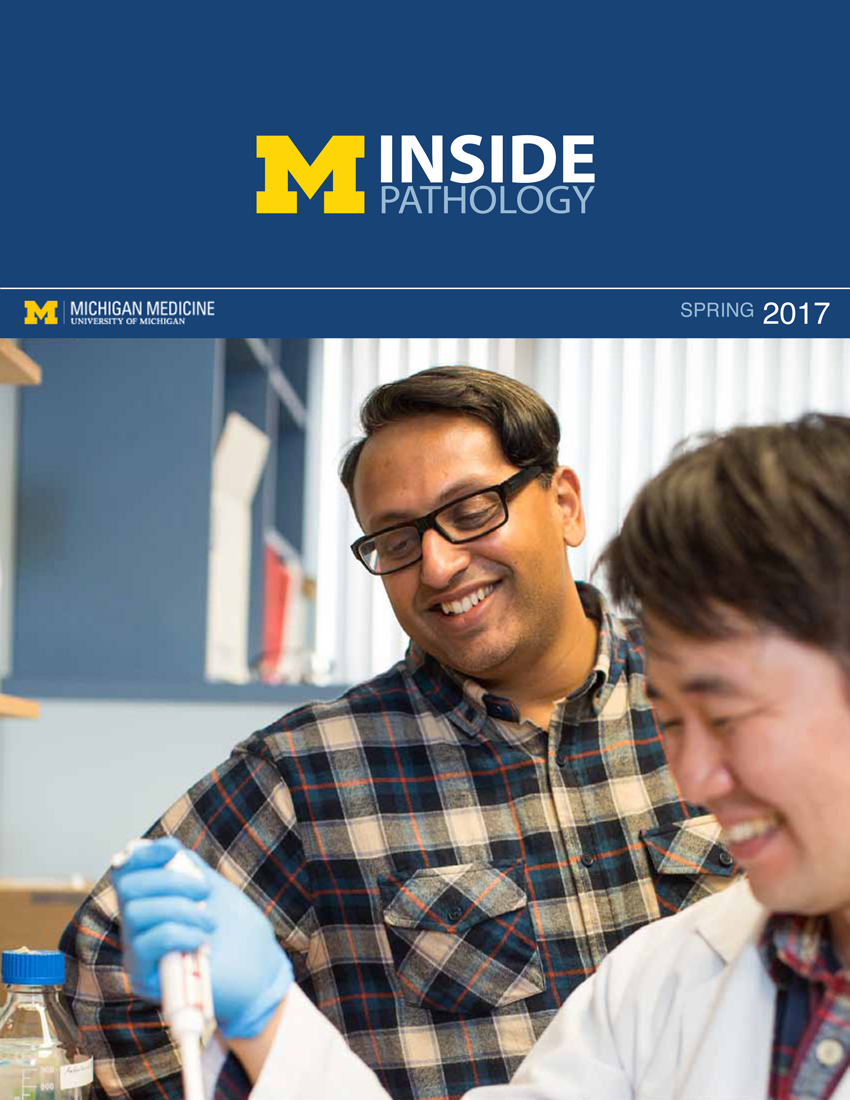 ON THE COVER
ON THE COVER
Dr. Sriram Venneti, MD, PhD and Postdoctoral Fellow, Chan Chung, PhD investigate pediatric brain cancer. See Article 2017Department Chair |

newsletter
INSIDE PATHOLOGYAbout Our NewsletterInside Pathology is an newsletter published by the Chairman's Office to bring news and updates from inside the department's research and to become familiar with those leading it. It is our hope that those who read it will enjoy hearing about those new and familiar, and perhaps help in furthering our research. CONTENTS
|
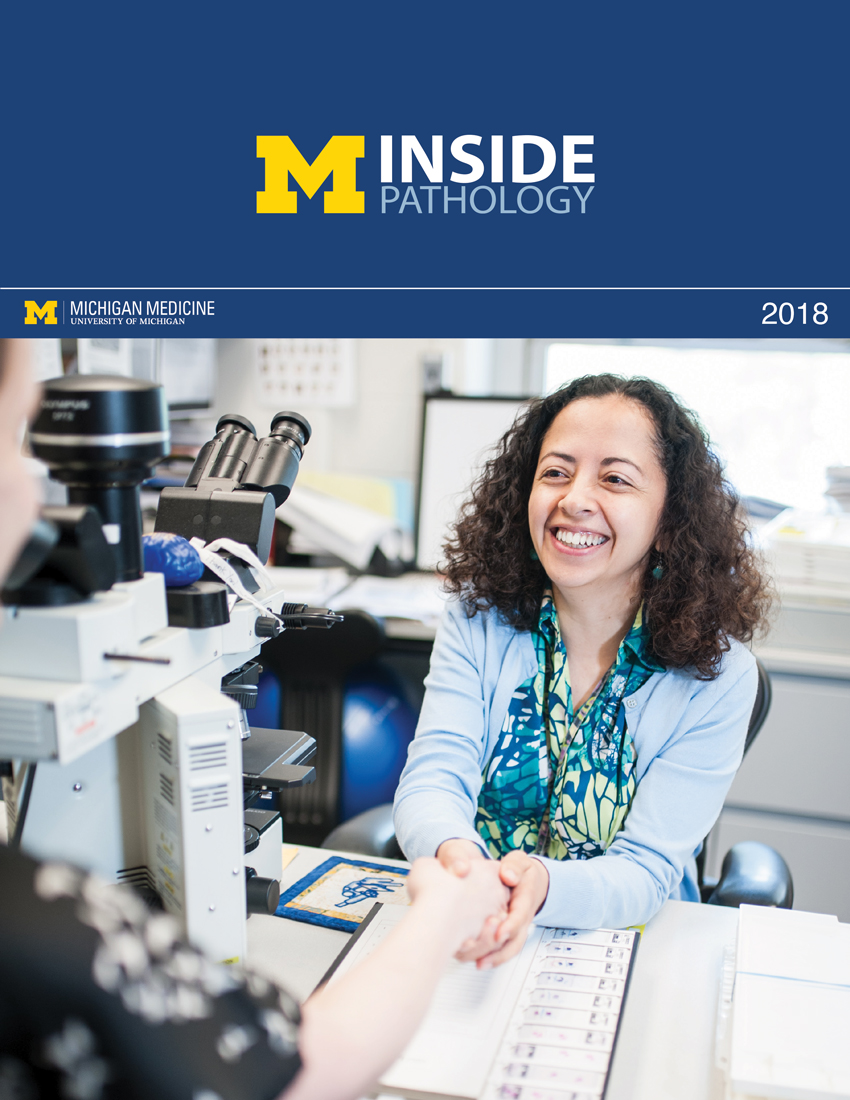 ON THE COVER
ON THE COVER
Director of the Neuropathology Fellowship, Dr. Sandra Camelo-Piragua serves on the Patient and Family Advisory Council. 2018Department Chair |

newsletter
INSIDE PATHOLOGYAbout Our NewsletterInside Pathology is an newsletter published by the Chairman's Office to bring news and updates from inside the department's research and to become familiar with those leading it. It is our hope that those who read it will enjoy hearing about those new and familiar, and perhaps help in furthering our research. CONTENTS
|
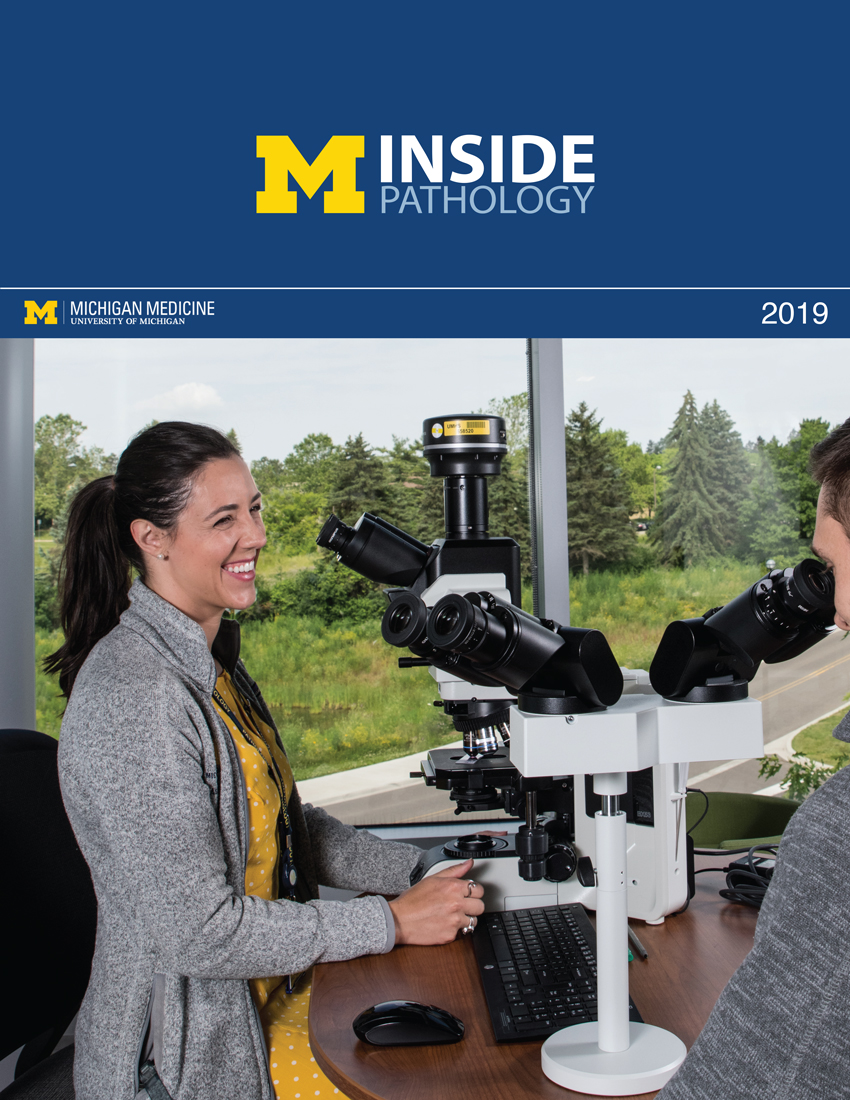 ON THE COVER
ON THE COVER
Residents Ashley Bradt (left) and William Perry work at a multi-headed scope in our new facility. 2019Department Chair |

newsletter
INSIDE PATHOLOGYAbout Our NewsletterInside Pathology is an newsletter published by the Chairman's Office to bring news and updates from inside the department's research and to become familiar with those leading it. It is our hope that those who read it will enjoy hearing about those new and familiar, and perhaps help in furthering our research. CONTENTS
|
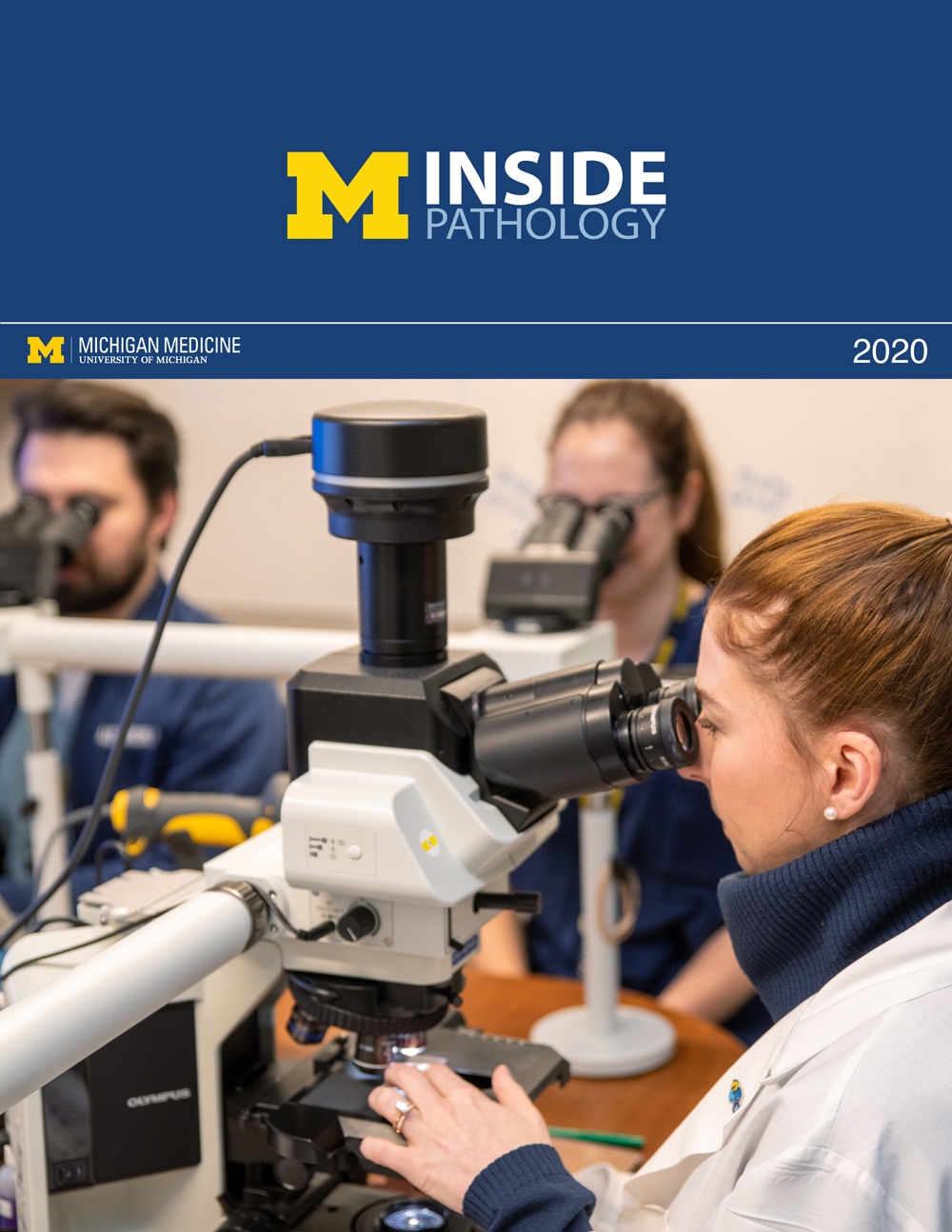 ON THE COVER
ON THE COVER
Dr. Kristine Konopka (right) instructing residents while using a multi-headed microscope. 2020Department Chair |

newsletter
INSIDE PATHOLOGYAbout Our NewsletterInside Pathology is an newsletter published by the Chairman's Office to bring news and updates from inside the department's research and to become familiar with those leading it. It is our hope that those who read it will enjoy hearing about those new and familiar, and perhaps help in furthering our research. CONTENTS
|
 ON THE COVER
ON THE COVER
Patient specimens poised for COVID-19 PCR testing. 2021Department Chair |

newsletter
INSIDE PATHOLOGYAbout Our NewsletterInside Pathology is an newsletter published by the Chairman's Office to bring news and updates from inside the department's research and to become familiar with those leading it. It is our hope that those who read it will enjoy hearing about those new and familiar, and perhaps help in furthering our research. CONTENTS
|
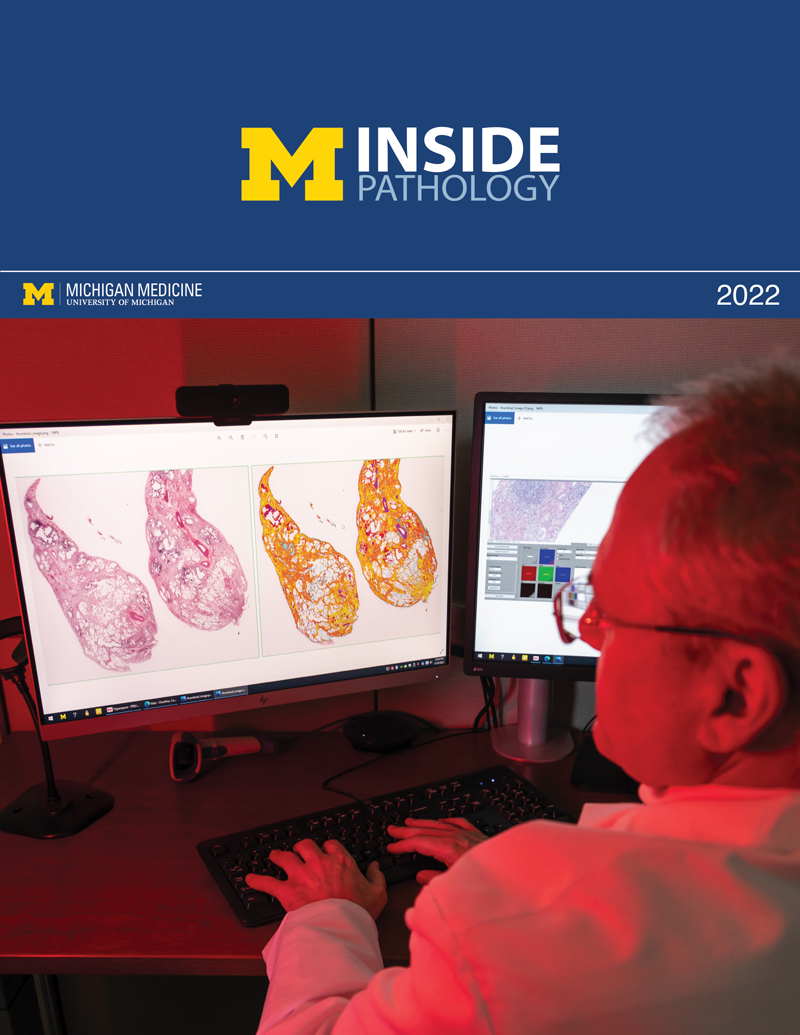 ON THE COVER
ON THE COVER
Dr. Pantanowitz demonstrates using machine learning in analyzing slides. 2022Department Chair |

newsletter
INSIDE PATHOLOGYAbout Our NewsletterInside Pathology is an newsletter published by the Chairman's Office to bring news and updates from inside the department's research and to become familiar with those leading it. It is our hope that those who read it will enjoy hearing about those new and familiar, and perhaps help in furthering our research. CONTENTS
|
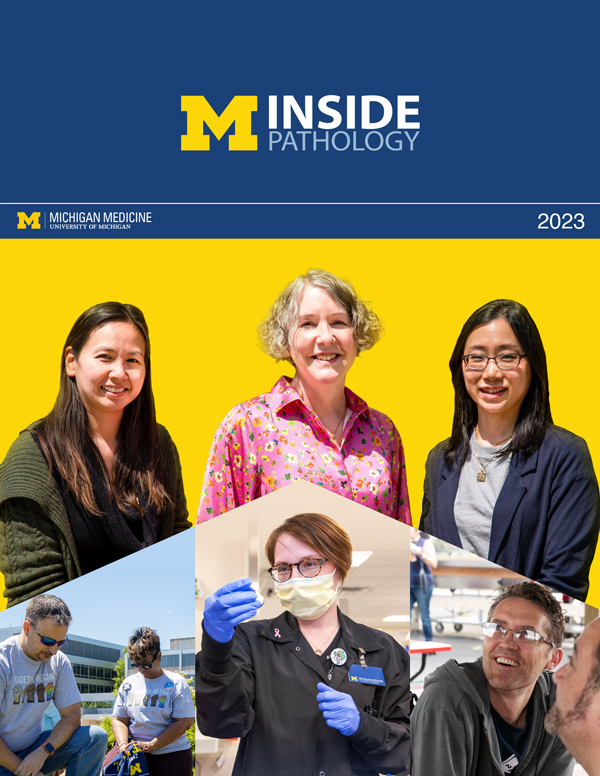 ON THE COVER
ON THE COVER
(Left to Right) Drs. Angela Wu, Laura Lamps, and Maria Westerhoff. 2023Department Chair |

newsletter
INSIDE PATHOLOGYAbout Our NewsletterInside Pathology is an newsletter published by the Chairman's Office to bring news and updates from inside the department's research and to become familiar with those leading it. It is our hope that those who read it will enjoy hearing about those new and familiar, and perhaps help in furthering our research. CONTENTS
|
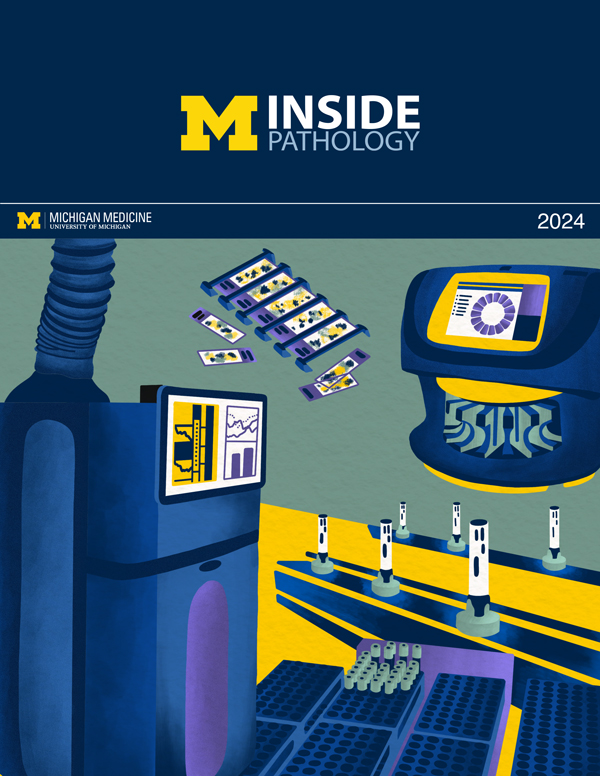 ON THE COVER
ON THE COVER
Illustration representing the various machines and processing used within our labs. 2024Department Chair |

newsletter
INSIDE PATHOLOGYAbout Our NewsletterInside Pathology is an newsletter published by the Chairman's Office to bring news and updates from inside the department's research and to become familiar with those leading it. It is our hope that those who read it will enjoy hearing about those new and familiar, and perhaps help in furthering our research. CONTENTS
|
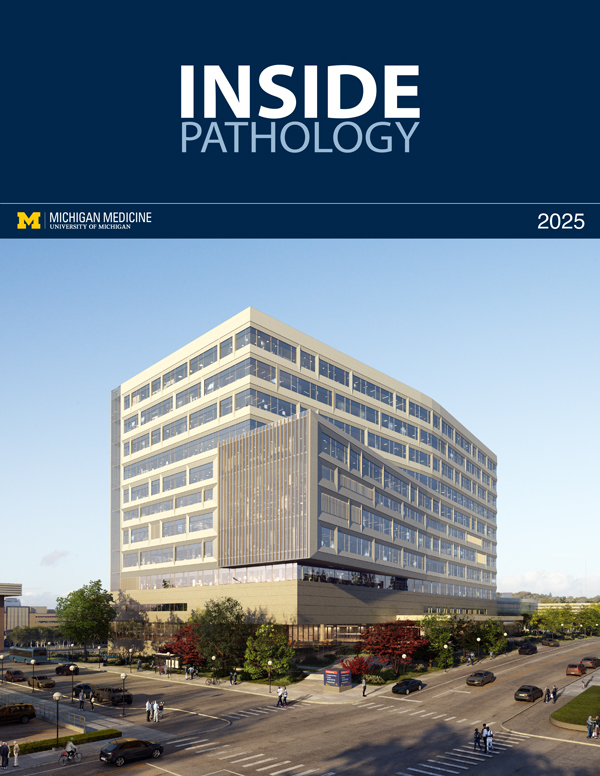 ON THE COVER
ON THE COVER
Rendering of the D. Dan and Betty Khn Health Care Pavilion. Credit: HOK 2025Department Chair |

newsletter
INSIDE PATHOLOGYAbout Our NewsletterInside Pathology is an newsletter published by the Chairman's Office to bring news and updates from inside the department's research and to become familiar with those leading it. It is our hope that those who read it will enjoy hearing about those new and familiar, and perhaps help in furthering our research. CONTENTS
|

MLabs, established in 1985, functions as a portal to provide pathologists, hospitals. and other reference laboratories access to the faculty, staff and laboratories of the University of Michigan Health System’s Department of Pathology. MLabs is a recognized leader for advanced molecular diagnostic testing, helpful consultants and exceptional customer service.